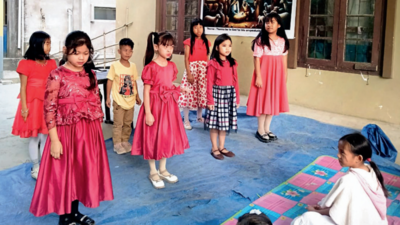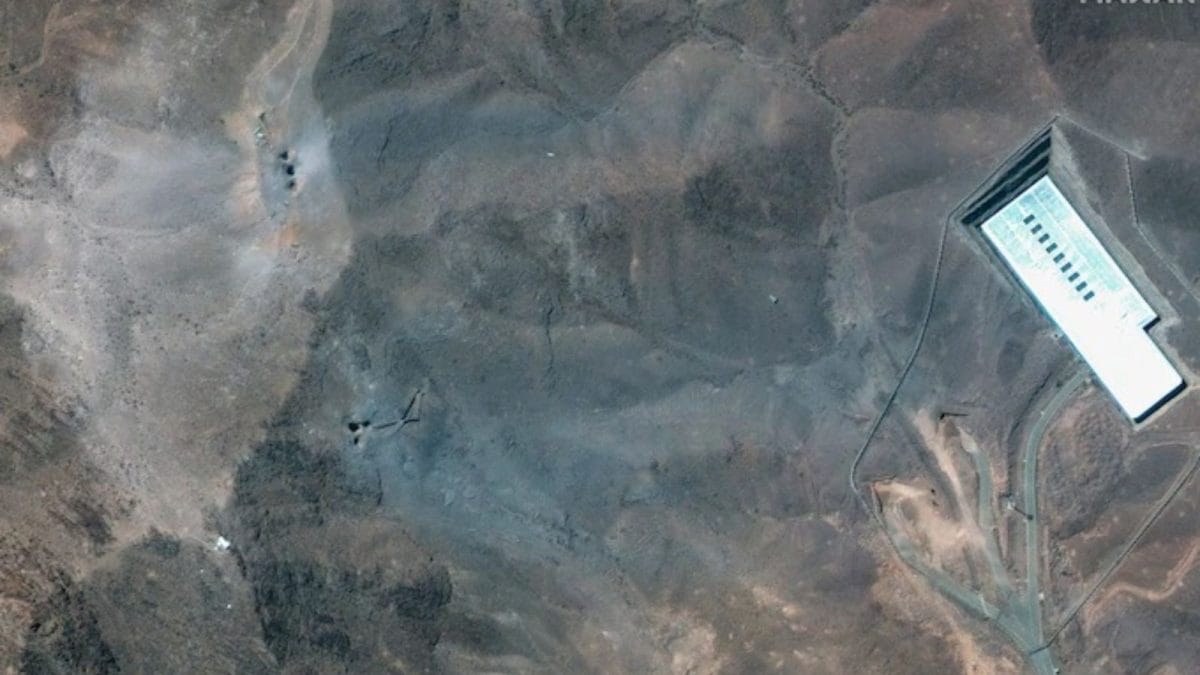ARTICLE AD BOX

Mizoram is showcasing an extraordinary tale of resilience and compassion as it grapples with one of the region's most significant humanitarian crises.Nestled between Myanmar and Bangladesh, Mizoram has become a safe shelter home for tens of thousands fleeing political turmoil and ethnic violence since 2021. This includes around 33,000 Chins from Myanmar, 2,200 Bawms from Bangladesh, and over 5,500 internally displaced Kuki-Zo people from Manipur, collectively making up 3% of the state's population as per the 2011 census.
However, the influx presents complex challenges for the small state, straining its resources and testing its capacity to manage such a large humanitarian burden. In response, Mizoram is embarking on a crucial mission to collect biometric and demographic data of the refugees from Myanmar, starting in July. The tiny state of Mizoram, wedged into Myanmar on its east and south and Bangladesh to the west, is experiencing one of South Asia's biggest humanitarian challenges, sheltering tens of thousands of displaced persons from the two neighbouring countries, and Manipuris fleeing political unrest, ethnic conflicts and violence.This crisis underscores both the remarkable solidarity shown by Mizos towards those who are ethnically part of the generic 'Zo' people, as well as the complex challenges that arise when a small state bears the burden of a major humanitarian emergency.

According to official figures, the total number of displaced people who have found shelter in Mizoram since 2021 account for around 3% of the state's estimated population: approximately 33,000 Chins from Myanmar, 2,200 Bawms from Bangladesh and over 5,500 internally displaced people (Kuki-Zo IDPs) from Manipur.
"The figures are dynamic," says Mizoram home minister K Sapdanga. "Some return whenever the situation becomes normal, but many others from different regions enter when things deteriorate."Mizoram is set to begin biometric and demographic data collection of displaced people from Myanmar amid rising security concerns and continued influx. The biometric identification drive is a response to both humanitarian needs and security challenges posed by the large population of displaced people from Myanmar.‘Priority is staying alive’The refugees are not concentrated in formal camps, but dispersed in 11 districts of Mizoram: Serchhip, Saitual, Mamit, Siaha, Lawngtlai, Champhai, Lunglei, Kolasib, Khawzawl, Hnahthial and Aizawl. Many stay with relatives or in rented accommodation.Zokwathar, the border trading point between India and Myanmar in Champhai district, has over 6,000 Myanmarese people, half of them cramped into five makeshift camps.
The rest - those who can afford it - have rented houses."Life is difficult, but secure. Our only priority is staying alive," says 44-year-old Lal Ram Mawi at the Bethel main camp in Zokhawtar. Mawi, a driver, arrived here from Kalaymyo, the westernmost district in Myanmar's Sagaing Division. He gathered his family and whatever little belongings they had in a hired car and fled after his house was bombed by the military in Sept 2021.
They drove for one day to reach the border and crossed over to Zokhawthar, walking down the bridge over the Tiau river, which defines the boundary between the two countries.
There were thousands of others who crossed the bridge - on that day, and for several days after.The local village authority collected money and set up camps built of bamboo and tarpaulin sheets, with compartments that serve as living spaces. With limited resources, the specifications were clear: a family of four or fewer would get a compartment measuring 6ft x 8ft; larger families would get 6ft x 12ft compartments.Life in the camps is spartan. Residents sleep on bamboo platforms. Kitchens are long corridors with separate units for each family; cooking is with firewood or charcoal. Residents get medical support and rice from govt and drinking water from village authorities. All other essentials are via donations. For anything else, residents earn money as daily labourers.Sapdanga explains that since India is not a signatory to the UN Refugee Convention, camp residents cannot be classified as "refugees", but "displaced people".
"Only when Myanmar has a stable govt can we have discussions with it for giving meaningful treatment to their people. Now, neither the Centre nor the state can have budgetary provisions for them."The Young Mizo Association (YMA), Mizoram's biggest NGO, is reaching out to the displaced people with food, warm clothes and medicines. But despite initial generosity, support for refugees has diminished, and contributions are falling."How much longer can people contribute? I don't know," says Malsawmliana, general secretary, central YMA.IDPs from ManipurLife is a little better for the "internally" displaced from Manipur. Thousands of people from Manipur have sought refuge in Mizoram, escaping ethnic clashes in their state that started in May 2023. But many have returned to Manipur in the recent past.Until violence erupted, Robert Gangte used to run his kindergarten school, Jonidas Kidsdom, at Sugnu in Manipur's Chandel district.
On the night of May 28, 2023, he and 35 other families from his village fled to an Assam Rifles camp after they were fired at and their houses burnt down. One month later, they were all in Mizoram.Gangte today earns his livelihood from a relief camp at Rajiv Awas Yojana housing colony in Aizawl's Falklands locality. "I earn about Rs 600 if I get work, and the locals are quite helpful in giving work," says Gangte, a father of three.Sapdanga points out that Manipur's displaced Kukis also avail themselves of ration facilities.Shared identity, cultural bondsMizoram govt's response to the refugee crisis is deeply rooted in historical and ethnic connections between Mizos and refugees, particularly those from Myanmar's Chin state and Bangladesh's Chittagong Hill Tracts. The Mizos of India and Chins of Myanmar and Bangladesh share common ancestry, with closely related languages and customs.
This shared identity forms the foundation of Mizoram's welcoming approach towards the Chin refugees.
The 510km border between Mizoram and Myanmar's Chin state has historically facilitated cultural exchange and family connections that transcend national boundaries."The Tiau river is the border between Myanmar and India; it doesn't matter on which side of the river people reside - they're the same," Sapdanga says.
"We are of the same tribe, and it is very difficult to differentiate one from the other," he adds, rejecting the Centre's proposal for fencing the border. "We cannot accept this fencing."Political engagementMizoram's involvement in the refugee crisis extends beyond humanitarian aid to political engagement with the conflict in Myanmar. In Feb, chief minister Lalduhoma facilitated the merger of two Myanmar-based pro-democracy rebel factions - the Chinland Council and the Interim Chin National Consultative Council.
This mediation led to the formation of the Chin National Council, an entity aimed at consolidating Chin resistance against Myanmar's military junta.This political involvement demonstrates Mizoram's stance - addressing the root causes of the refugee crisis, rather than merely managing its symptoms. The state's approach often diverges from the Centre's official policy on Myanmar.In March 2021, the ministry of home affairs directed chief secretaries of border states to take appropriate action to check illegal influx from Myanmar into India, emphasising that India, as a non-signatory to the UN Refugee Convention and its 1967 Protocol, does not grant refugee status to foreigners.However, Mizoram govt explicitly rejected this approach. Former CM Zoramthanga, in a letter to PM Narendra Modi, stated that the directive was not acceptable to Mizoram and insisted that the humanitarian crisis could not be ignored. CM Lalduhoma has maintained this stance of prioritising humanitarian considerations over strict enforcement of immigration policies.



.png)
.png)
.png)
















 5 hours ago
4
5 hours ago
4









 English (US) ·
English (US) ·